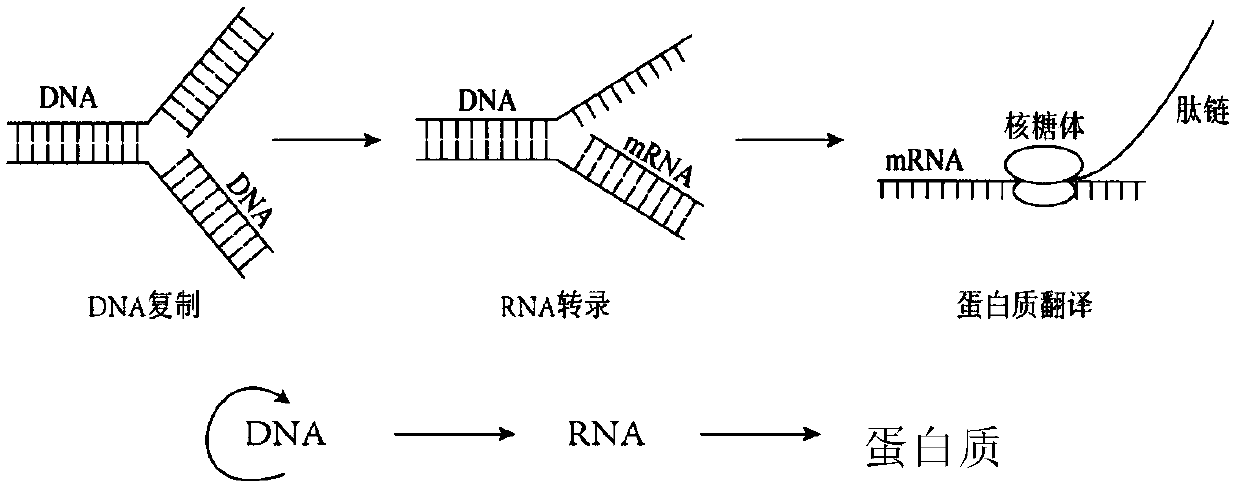Signal peptide related sequences and application thereof in protein synthesis
A signal peptide and sequence technology, applied to signal peptide-related sequences and their application in protein synthesis, can solve problems such as affecting the structure and function of target proteins
- Summary
- Abstract
- Description
- Claims
- Application Information
AI Technical Summary
Problems solved by technology
Method used
Image
Examples
preparation example Construction
[0152] In the present invention, the preparation method of the yeast cell extract is not limited, and a preferred preparation method includes the following steps:
[0153] (i) providing yeast cells;
[0154] (ii) washing the yeast cells to obtain washed yeast cells;
[0155] (iii) performing cell disruption treatment on the washed yeast cells, thereby obtaining crude yeast extract;
[0156] (iv) performing solid-liquid separation on the crude yeast extract to obtain the liquid part, which is the yeast cell extract.
[0157] In the present invention, the solid-liquid separation method is not particularly limited, and is preferably centrifugation.
[0158] In the present invention, the centrifugation conditions are not particularly limited, and the centrifugation conditions are 5000-100000g, preferably 8000-30000g.
[0159] In the present invention, the centrifugation time is not particularly limited, and the centrifugation time is 0.5min-2h, preferably 20min-50min.
[0160]...
Embodiment 1
[0254] Example 1 Determination of eukaryotic cell signal peptide-related sequences
[0255] 1.1 Source and determination of signal peptide-related sequences: Randomly intercept the DNA sequence corresponding to the N-terminus of the constructed foreign protein, and screen the sequence or element that significantly improves the expression of the foreign protein through experiments.
[0256] Specifically, select and synthesize 30 nucleotide fragments with a base length of 36, 54 or other lengths, and modify some bases by means of staggered replacement of synonymous codons to improve the success rate of plasmid construction, wherein Including (but not limited to): reducing the annealing temperature of the sequence in order to reduce the GC content in the sequence related to the signal peptide; or using preferred codons. Dozens of plasmids were constructed. After analysis and screening, 30 of them were tested for their effects on foreign protein expression. The results showed that...
Embodiment 2
[0260] Embodiment 2 Containing the construction of the in vitro protein synthesis system plasmid of signal peptide related sequence
[0261] Plasmid construction: Use 1 pair of primers to amplify the selected 30 signal peptide-related sequences and connecting sequences (the connecting sequences contain TEV restriction sites), and use its original plasmid backbone containing the target protein (eGFP as an example) The corresponding reverse primers were used for amplification. After the amplification is completed, 30 signal peptide-related sequences + connecting sequence fragments are inserted into the N-terminal of the target protein. In the final constructed plasmid, 30 signal peptide-related sequences + linker sequence nucleic acid sequences were inserted between the ATG start codon of the pD2P-eGFP plasmid and eGFP. The names of 13 plasmids are: pD2P-1.0SP-(001-013) (see Table 1).
[0262] The specific construction process is as follows:
[0263] Use 2 pairs of primers to c...
PUM
 Login to View More
Login to View More Abstract
Description
Claims
Application Information
 Login to View More
Login to View More - R&D
- Intellectual Property
- Life Sciences
- Materials
- Tech Scout
- Unparalleled Data Quality
- Higher Quality Content
- 60% Fewer Hallucinations
Browse by: Latest US Patents, China's latest patents, Technical Efficacy Thesaurus, Application Domain, Technology Topic, Popular Technical Reports.
© 2025 PatSnap. All rights reserved.Legal|Privacy policy|Modern Slavery Act Transparency Statement|Sitemap|About US| Contact US: help@patsnap.com



